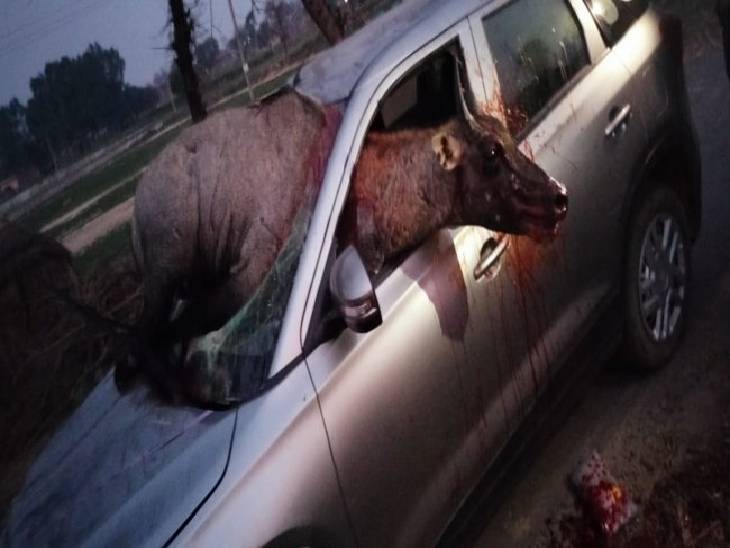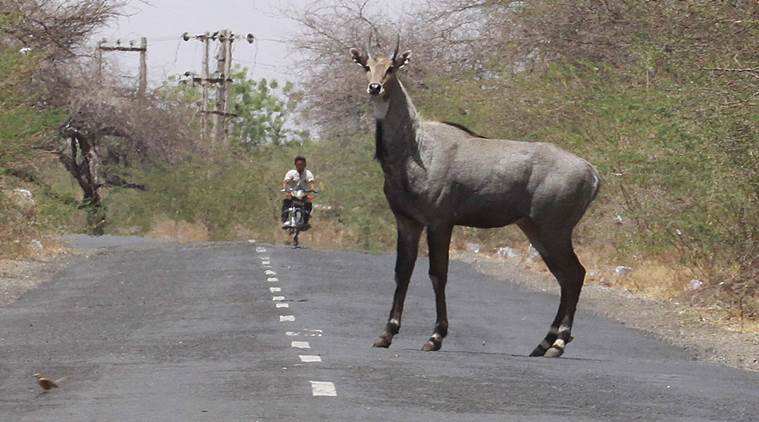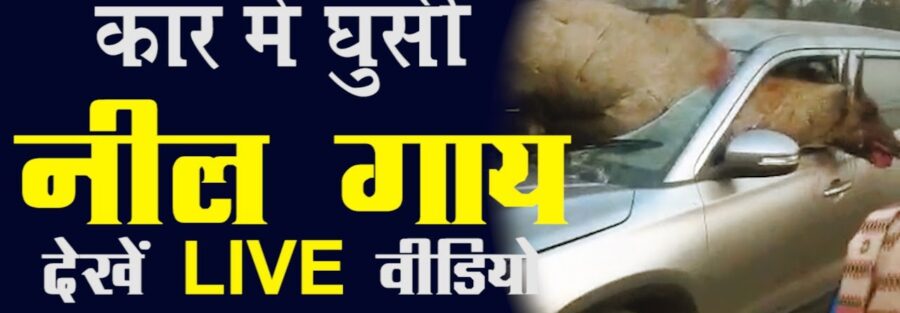Introduction:
Motor vehicle accidents are a significant concern across the globe, with various factors contributing to these incidents. In India, a unique element adds to the complexity of road safety—the presence of the nilgai, also known as the “blue cow.” As the largest antelope in Asia, the nilgai’s interactions with motor vehicles have raised concerns regarding accidents and insurance claims. In this blog post, we will explore the challenges posed by nilgai encounters on Indian roads and their impact on insurance claims.
The Nilgai’s Physical Characteristics:
The nilgai (Boselaphus tragocamelus) is an impressive creature that inhabits the northern Indian subcontinent. Standing at 1–1.5 meters (3.3–4.9 feet) tall at the shoulder, these antelopes exhibit sexual dimorphism. Females and juveniles have an orange to tawny coat, while adult males showcase a bluish-grey hue. One distinguishing feature of the nilgai is the presence of horns, found only in males, measuring 15–24 centimeters (5.9–9.4 inches) in length.
The Nilgai’s Role in Motor Vehicle Accidents:
Due to urbanization and expanding human settlements, the nilgai’s natural habitat has increasingly overlapped with road networks. This overlapping has resulted in more frequent encounters between these majestic creatures and motor vehicles. Nilgais are known to be agile and can quickly dart across roads, making it challenging for drivers to react promptly. These sudden appearances can lead to collisions and subsequent motor vehicle accidents.

Implications for Road Safety:
Motor vehicle accidents involving nilgai can have severe consequences for both human safety and the animal population. The large size and weight of nilgais, with males weighing between 109–288 kilograms (240–635 pounds) and females ranging from 100–213 kilograms (220–470 pounds), can cause significant damage to vehicles involved in accidents. Moreover, the sudden impact of such collisions can result in injuries or fatalities for both drivers and passengers.
Insurance Claims and the Nilgai Factor:
The increase in motor vehicle accidents involving nilgai has raised concerns for insurance companies and policyholders. When an accident occurs, individuals typically file insurance claims to cover the damages and losses incurred. However, assessing liability and processing these claims can become complicated when wildlife, such as the nilgai, is involved.
Determining fault in motor vehicle accidents with nilgai requires careful investigation. Insurance companies evaluate various factors such as vehicle speed, driver’s reaction time, and the presence of warning signs or designated animal crossing areas. If negligence is established, the driver may be held responsible for the damages caused, subject to the terms and conditions of their insurance policy.

Mitigating Nilgai-Related Accidents:
To address the challenges posed by nilgai encounters on Indian roads, proactive measures should be taken. Local authorities can work in collaboration with wildlife conservation organizations to implement strategies such as:
Enhancing awareness: Conducting public awareness campaigns to educate drivers about the presence of nilgai in specific areas and the need for caution while driving.
Signage and warning systems: Installing prominent signage and warning systems at known nilgai crossing points to alert drivers and encourage reduced speeds.
Wildlife corridors: Establishing dedicated wildlife corridors or underpasses to facilitate safe passage for nilgai and minimize their interaction with vehicles.
Conclusion:
The presence of the nilgai on Indian roads presents unique challenges in terms of motor vehicle accidents and insurance claims. Striking a balance between ensuring road safety for drivers and passengers while protecting the nilgai population requires collaborative efforts from stakeholders. By raising awareness, implementing effective signage and warning systems, and establishing wildlife corridors, we can mitigate the risks associated with nilgai encounters and promote safer roads in Western UP, Haryana, and the NCR region.
In Western UP, Haryana, and the NCR region, where urbanization and human settlements have encroached upon the nilgai’s habitat, the frequency of encounters between these majestic creatures and motor vehicles has increased. It is crucial for drivers in these areas to be aware of the potential presence of nilgai and exercise caution while driving.
Local authorities, in conjunction with wildlife conservation organizations, can play a pivotal role in raising awareness among drivers. Public awareness campaigns can educate motorists about the specific areas where nilgai are commonly found and the need for increased vigilance on the roads. By understanding the risk and taking appropriate precautions, drivers can help reduce the incidence of accidents involving nilgai.
Furthermore, installing prominent signage and warning systems at known nilgai crossing points is essential. These visual cues serve as reminders for drivers to slow down and be prepared for potential encounters with nilgai. Clear and informative signage can also indicate designated animal crossing areas, helping drivers anticipate the presence of wildlife and adjust their driving behavior accordingly.
Additionally, establishing dedicated wildlife corridors or underpasses can provide safe passage for nilgai and minimize their interaction with vehicles on the roads. These corridors serve as designated pathways for wildlife, allowing them to navigate across human settlements without crossing busy roads. By separating the routes of nilgai and vehicles, the risk of collisions can be significantly reduced.
In conclusion, motor vehicle accidents involving nilgai in Western UP, Haryana, and the NCR region pose challenges to road safety and insurance claims. However, by enhancing awareness, implementing effective signage and warning systems, and establishing wildlife corridors, we can mitigate these risks and promote a safer coexistence between humans and nilgai. It is essential for all stakeholders, including drivers, authorities, and wildlife conservation organizations, to collaborate and take proactive measures to ensure the well-being of both humans and these magnificent creatures on Indian roads.
By:
Rajiv Chauhan
(Surveyor & Loss Assessor)









































